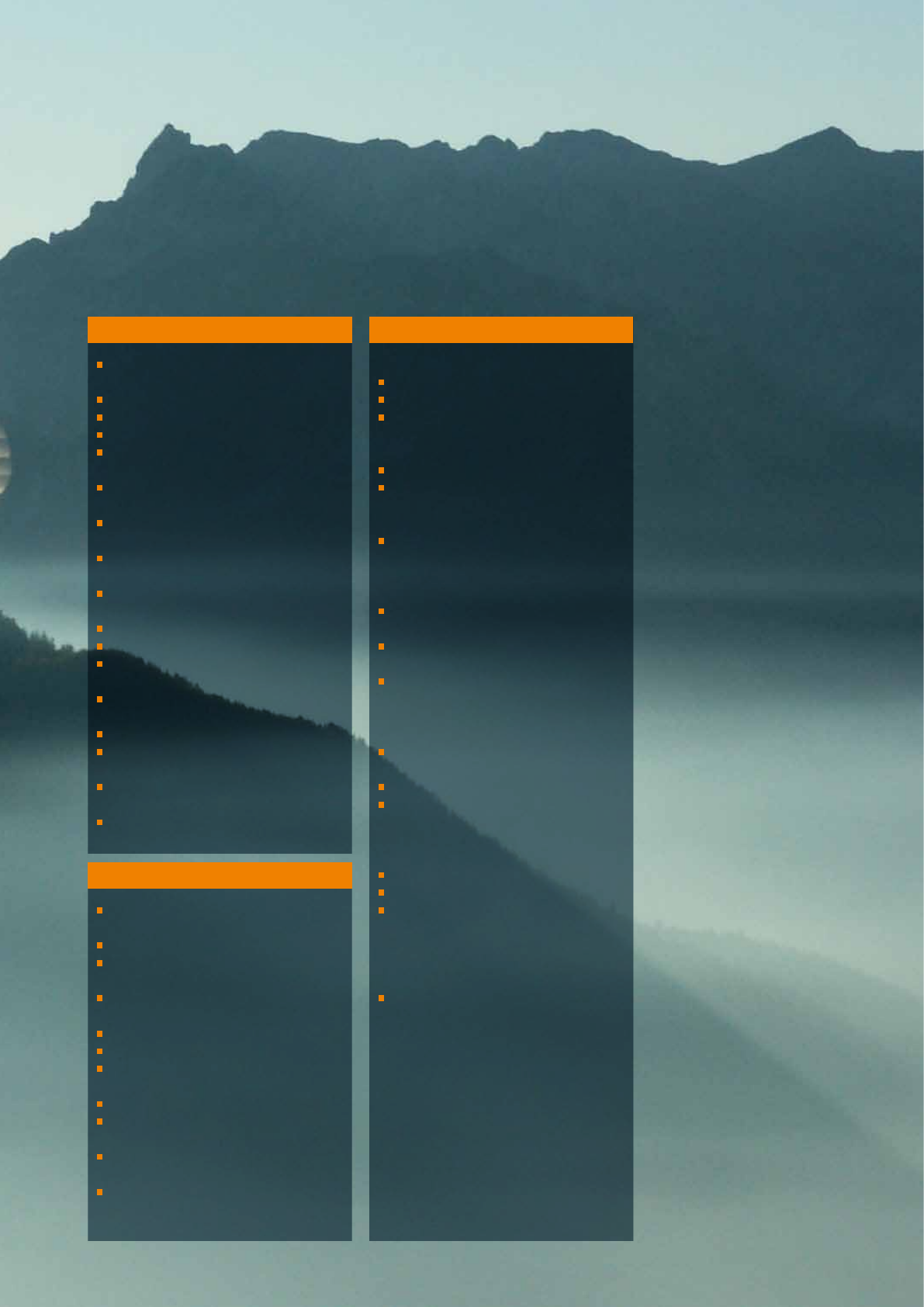User Manual

11
Economic efficiency
Use of daylight without glare
(tracking of blinds)
Blinds with daylight control
Constant light control
Lighting depending on presence
Corridor lighting depending on
presence and main usage times
Heating, ventilation, and air
conditioning depending on demand
Reduced heating when windows
are left open
“Central off“ for heating, ventilation,
and air conditioning
Usage changes with no need for
rewiring
Straightforward extension of functions
Wireless plant extensions
Efficient building management
including visualization
Building management of distributed
premises
Central monitoring
Switching off consumers that are
not needed
Preventing damage thanks to
early-state fault status messages
Demand-controlled maintenance
Safety and security
Corridor lighting depending on
presence
Outdoor and pathway lighting
Central shut-off of equipment
at night
Display of windows, doors or
skylights left open
Integration of access control
Security and escape route lighting
Automatic change to emergency
lighting
Reaction in the event of fire alarm
Visualization shows where the alarm
was set off
Monitoring of buildings from remote
locations
Monitoring without special
monitoring equipment
Especially ...
... in production halls
Flexible lighting and air conditioning
Control of light coupling actuators
Force-controlled ventilation
... on facades
Light effects
Color light control
... in the lobby
Access control
... in social and sanitary facilities,
kitchenettes
Control of extract air system
depending on presence and air quality
Automatic disconnection of power
outlets
Water detector
... in garages, underground
parking lots
Lighting depending on presence
and main usage times
3-sectional switching
Acquisition of operating hours
... in connection with gates,
barriers, and delivery zones
Central control of gates and barriers
Automatic departures
Integration of gate contacts into
room temperature control
... and for every application the right
kind of operation
Matching user interfaces
for all needs
11










